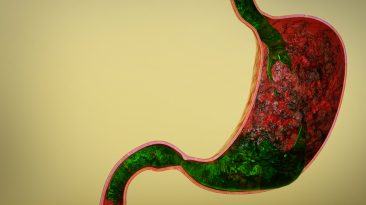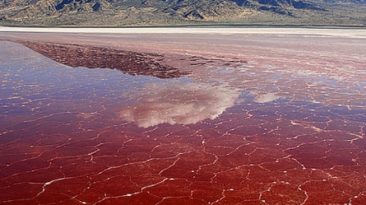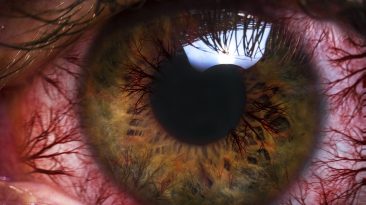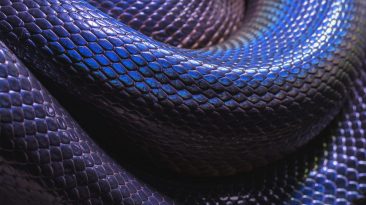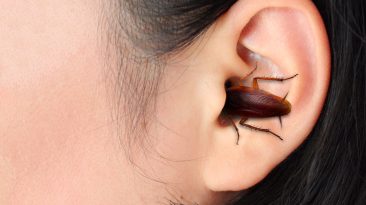A giant, fork-tongued lizard with razor-sharp teeth. And a bite with bacteria-laced venom that’s seeping into your flesh. Well, this is no legend. It’s a Komodo dragon. What would happen if you were attacked by one of these giant lizards? What would be your best bet to fight it off? And if you escaped, how long before its venom would leave you in a pool of blood?
Komodo dragons, also known as Komodo monitors, are the largest lizards in the world. As adults, they have an almost-uniform stone color and can weigh around 70 kg (154 lb). The largest Komodo dragon ever found weighed 166 kg (366 lb) and was more than 3 m (10 ft) long. They are powerful, voracious eaters with a taste for all kinds of meat.
From small rodents up to a large water buffalo. Their wide jaws and strong throat muscles allow them to devour huge chunks rapidly. And they can eat up to 80% of their own body weight in one meal. Sadly, they are an endangered species, with only 1,380 adult Komodo dragons left in the wild. They can be found on the Lesser Sunda islands of Indonesia.
Most fitting, the island of Komodo. Here they live on beaches, ridgetops and even tropical savanna forests. Just waiting for the perfect chance to attack you. Arriving on the island of Komodo, you’d be excited and looking forward to some peaceful vacation time. But as you walk around the tropical forests, you’d be blissfully unaware that Komodo dragons could already be stalking you.
Their hunting strategy is all about stealth and power. It all comes down to their sense of smell when they are on the prowl for food. And they can pick up the trail of rotting flesh from up to 4 km (2.5 mi) away. For the Komodo, it’s not about taking a whiff of air with their nose. Instead, their peculiar method involves sticking out their long forked tongue to sample the air.
Then they roll it back in, touching it to the roof of their mouth. Here, the tongue rubs against a sensory organ that can detect different airborne molecules. A Komodo can then use those molecules as a guide for what direction to head toward. Or it can stay perfectly still for hours, just waiting for their prey. In this case, that’s you.
Luckily, you’d spot the yellow-tongued lizard before it attacks. Now would be a good time to run. But with a Komodo’s running speed clocking in at up to 20 km/h (13 mph), you wouldn’t get very far. The dragon would bite down hard on your ankle. The pain would be immense, but you’d fight back. You’d punch its neck, trying to force it to let go of you. But no luck.
Maybe you’d better try prying open its massive jaws with your own bare hands. You’d struggle and struggle, but it would work. Although, it would come at a cost. Your hands would get sliced by the large, serrated teeth of the dragon. Now you’d be bleeding profusely from the leg and hands. Time to get away and find help before the giant lizard has you for lunch.
But a worse fate may now lay before you. All over the Komodo dragon’s jagged teeth, there are bits of meat from its last meal. Those bits make the perfect breeding ground for dangerous strains of bacteria. And that bacteria would now be infecting your body. From your bite wounds, you could be exposed to 50 different varieties of bacteria.
Some of these are highly septic, potentially leading to severe infection. But the worst still wouldn’t be over. You would now have venom coursing through your body too. This would lower your blood pressure and prevent your blood from clotting. You could only have a few minutes left before you bleed out. Even if you slow the bleeding, this would be a terrible way to go.
You could start to get the chills and a fever. Your whole body would be in pain. Eventually, your heart and circulatory system would begin to fail entirely. Blood would no longer flow to any of your organs, causing them to fail. It’s likely you wouldn’t have the time to make it somewhere safe. And the Komodo dragon’s hunt for you would resume.
Remember how they can smell rotting meat from kilometers away? Well, your injuries would now attract every Komodo around you. And while no Komodo dragon could swallow you whole on its own, a group of them would devour every scrap of your body. That’s right. They’d eat your bones and your intestines, possibly even swinging them around a bit to remove all the undigested contents. What a delicious meal.
As scary and horrible as this would all be, you could rest a bit easier knowing that it’s extremely rare. It happens, sure. But prior to a deadly Komodo dragon attack on a young child in 2007, there hadn’t been a single fatal incident on Komodo Island in 33 years. Maybe you should be more scared of another giant predator attacking you. Like a crocodile.
Sources
- “Jacobson’s Organ | Anatomy”. George R. Zug, 2022. britannica.com.
- “Komodo Dragon”. 2016. nationalzoo.si.edu.
- “The Most Infamous Komodo Dragon Attacks Of The Past 10 Years”. Rachel Nuwer. 2013. smithsonianmag.com.
- “Dragon Tales: Zookeeper’s Komodo Bite Raises Questions”. Elizabeth Palermo. 2015. livescience.com.
- “Sepsis 101”. 2022. webmd.com.












